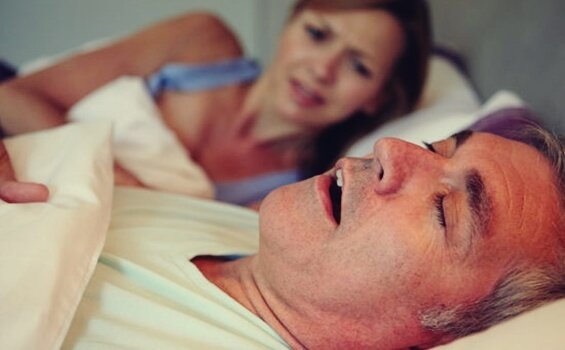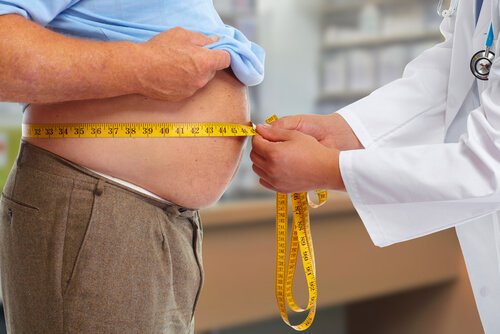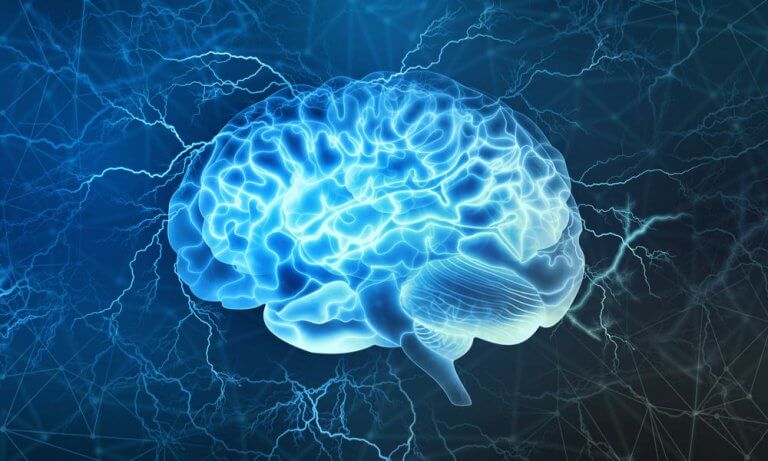Sleep Apnea: Causes, Warning Signs, and Treatment


Written and verified by the psychologist Valeria Sabater
They say that sleep apnea is a disease that robs a person of oxygen and steals days from their life while they sleep. It’s more than just snoring. Apnea affects almost 5% of people and is associated with an increased risk of other diseases, too.
Some physiological processes that we think are normal are actually neither normal nor healthy. Some say that we all snore at night, especially men, and that it’s nothing you need to go to the doctor for. That is not true. Sleep apnea is actually a serious condition — and more common than we think. It affects men and women equally and the consequences can be huge.
It’s a mistake to say you don’t need to go to the doctor for snoring. Sleep apnea can even be fatal, and there is a simple reason for it. Sleep apnea is when breathing is suddenly interrupted during sleep. The person may stop breathing for 5, 6, or even 10 seconds. Their body then automatically restarts the breathing process, without waking up.
It may seem harmless at first, but you have to bear in mind that it happens repeatedly, sometimes over 20 times an hour. Now you can see why the consequences are so serious, more so if we picture it happening night after night.
It is not harmless. The idea that it only affects men is false as well: there are studies that show that both men and women experience this syndrome in equal numbers.

What is sleep apnea and what are its symptoms?
Many people have it and don’t know it. People don’t hear their own snoring or notice the sudden interruption in breathing. But when an interruption occurs, airways narrow, causing the lungs to collapse as air stops reaching them. The body stops receiving oxygen, CO2 levels rise in the blood, and the brain stops oxygenating for 7 to 10 seconds.
After a while, the person breathes again, after a much louder than normal snore. It’s like someone who comes up for air after swimming or finally breathes again after choking. Based on the number of interruptions per hour, the condition can be classified into 3 categories:
- Mild: interruptions occur between 10 and 20 times per hour
- Moderate: interruptions occur between 20 and 30 times an hour
- Severe: interruptions occur more than 30 times per hour
Causes of sleep apnea
There are several causes associated with sleep apnea. When you think of it, you might picture a middle-aged, overweight male. Someone who snores at night and wakes up exhausted and unable to function without coffee. Well, it should be said that it’s more nuanced than that, and that the disorder has many origins:
- Deviation of the nasal septum
- Polyps in the respiratory tract
- Large palate
- Cranio-facial peculiarities: the shape of the face, dimensions of the lower jaw, length of the neck, etc.
- Obesity
- Hyperthyroidism
- Smoking: tobacco can cause inflammation in the respiratory tract
- A brain disorder in which the brain stops sending respiratory stimuli during small moments of time at night. This cause is uncommon.

We will stress again: sleep apnea affects both men and women. However, for women, it is more common after menopause, when the various metabolic changes contribute to the problem.
Consequences of sleep apnea
The main effect of sleep apnea is obvious: the person does not get a good night’s sleep, and so they’re drowsy and fatigued during the day. In serious cases, they feel totally unable to go about their day, their exhaustion is so extreme.
- Dry mouth
- Excessive sweating
- Sleep talking
- Headache
- Edema in the legs (for serious cases)
- Trouble concentrating
- Memory loss
- Hyperactivity (in children)

More serious consequences:
- Hypertension
- Asthma
- Atrial fibrillation
- A higher risk of developing certain types of cancer.
- Kidney problems.
- Cognitive and behavioral disorders: decreased attention, problems with motor skills and verbal and visiospatial memory.
- Increased risk of developing dementia.
- Diseases of the heart and blood vessels, such as atherosclerosis, heart attacks, heart failure, and stroke.
- Eye disorders, such as glaucoma, dry eye, etc.
- Metabolic disorders, including glucose intolerance and type 2 diabetes.
- Pregnancy complications, such as gestational diabetes.
Treatment for sleep apnea
Treatment will depend on the patient and the cause. For example, if it’s caused by hyperthyroidism, treatment will differ from a case caused by a deviated septum. That said, here are the most common treatments:
- Lifestyle changes: better diet and more physical activity.
- Using a night-time breathing device such as a CPAP machine, which expels pressurized air and connects to a face mask.
- Mandibular repositioning devices: devices that cover the top and bottom teeth and keep the jaw in position so it does not block the upper airway.
- Tongue retaining devices: mouthpieces that hold the tongue in a forward position to prevent it from blocking the airway.
- Education to improve the position of the tongue and strengthen the muscles that control the lips, tongue, soft palate, lateral pharyngeal wall, and face.
Finally, in the most serious cases, surgery will be done to correct breathing during sleep. As you can see, treatment will be customized for the person, but the aim is always to improve the quality of their sleep and ultimately their life.
Bibliographic references
García Urbano, J. (2012). Roncopatía y Apnea Obstructiva – Soluciones a los problemas del sueño. ISBN 978-84-937238-9-7.
Friedman, Michael (2009). Apnea del sueño y roncopatía: tratamiento médico y quirúrgico. Elsevier España.
This text is provided for informational purposes only and does not replace consultation with a professional. If in doubt, consult your specialist.








